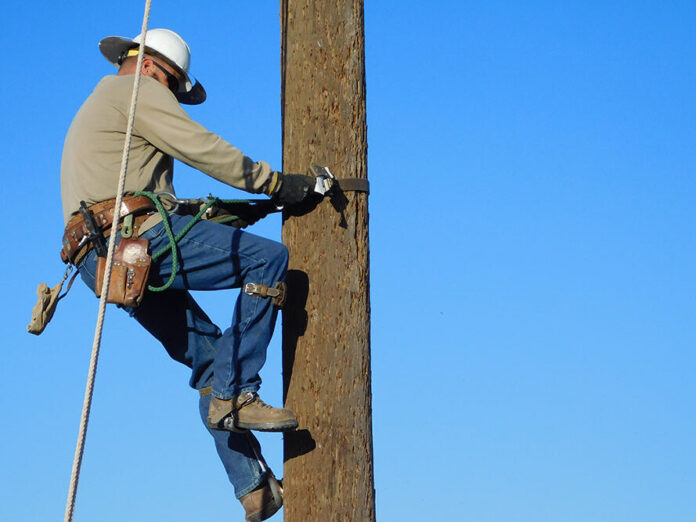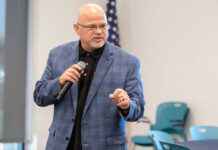

By Mike Bristol, ED3
Congress established April 18 as National Lineman Appreciation Day in 2013 (Senate) and again in 2015 (House) to recognize “the efforts of linemen in keeping the power on and protecting public safety.”1
This day has been set aside for all Americans to express our appreciation to the great men and women that work so hard for us every day. Were it not for the daily efforts of the approximately 227,0002 men and women who work as linemen across America, we would not be able to enjoy the conveniences of modern life we have come to expect over the years.
We count on electrical power being at our command with a flip of a switch. Because our linemen do their jobs so well, we now take it for granted that our houses will be heated and cooled, the lights will come on when we need them, and that our entertainment devices such as TVs, computers, and cell phones will always be powered up and ready for us.
Even when we are away from our homes, we may not realize how much we depend on linemen: traffic lights, gas pumps, store refrigerators, etc. all require electricity, and when the power goes out, life becomes much more difficult.
As linemen work each day to maintain the power grid in top condition, they are usually working 30 to 40 feet in the air while handling wires energized with over 12,000 volts (that’s 1,000 times more voltage than your car battery). One false move and they could end up dead instantly. In addition, they are required to work through the notorious Arizona summers, when temperatures exceed 120°F, in full arc-flash protection gear. This is not a job that entails comfortable working conditions.
If that weren’t difficult enough, many times they are called upon to repair storm damage in the middle of the night while the storm is still rolling through the area. These men and women work tirelessly to get systems back in working order and quickly return service to their customers.
Many times, line crews work through the night and log more than 18 hours in a single shift while repairing storm damage. This requires them to do their jobs under some of the most dangerous conditions while dealing with darkness, severe weather, and lack of sleep, but they can’t just wait out the storm or wait until after dawn comes. This all happens while the rest of us sleep comfortably in our beds, oblivious to their travails.
Stop and think for a minute: Of all first responders, which would you think has the most dangerous job? Police officers who deal with dangerous criminals every day? Firefighters who regularly put their lives on the line to save life and property? Depending on the year considered, statistics show that linemen rank among those who have the most dangerous jobs of all. Despite extensive training and safety measures, between 30 and 50 linemen are killed in the line of duty each year while keeping the grid energized for our convenience. This level of fatalities is more than twice the rate of police or fire fighters3.
Our line crews here at ED3 are well-known for their hard work and their rapid responses to downed lines and power outages. ED3 line crews have restored power much faster, statistically, than many other utilities across the region.4
It is our honor to celebrate the hard work, innovation, and dedication of our electrical line workers. Join us in honoring them and their families across the country, by using the hashtag #thankalineman in social media. Even more importantly, if you see a line worker today, thank them for their service and let them know how much we all appreciate their hard work and their willingness to expose themselves to danger in the name of keeping the power on.
Mike Bristol is the director of Engineering & Operations for Electrical District No. 3.
References:
1 – https://www.congress.gov/bill/113th-congress/senate-resolution/95
https://www.congress.gov/bill/114th-congress/house-resolution/136/all-info
2 – https://www.bls.gov/ooh/installation-maintenance-and-repair/line-installers-and-repairers.htm
3 – http://www.tdworld.com/transmission/utility-line-workers-one-top-10-most-dangerous-professions
4 – System Average Interruption Duration Index (SAIDI) for ED3 is 42 minutes over the last four years, while APS has an average SAIDI of 249 minutes.










![Alleged car thief released without charges Phoenix police stop a stolen vehicle on April 20, 2024. [Facebook]](https://www.inmaricopa.com/wp-content/uploads/2024/04/IMG_5040-218x150.jpg)

![3 things to know about the new city budget Vice Mayor Amber Liermann and Councilmember Eric Goettl review parts of the city's 2024 operational budget with Mayor Nancy Smith on April 24, 2024. [Monica D. Spencer]](https://www.inmaricopa.com/wp-content/uploads/2024/04/spencer-042424-preliminary-budget-meeting-web-100x70.jpg)


